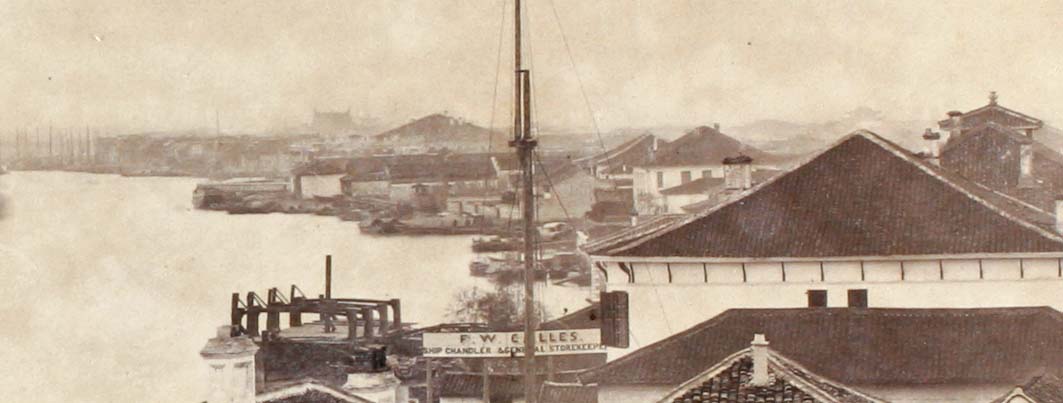The team has recently been corresponding with an informal group in the eastern Chinese city of Ningbo, who are researching the architectural heritage of this former treaty port. Opened under the first of the Sino-British treaties (Nanjing, 1842), Ningbo was never very successful commercially, and no substantial foreign population ever developed there. Although there was a small relatively informal foreign district, and a small foreign-run administration, it was too much in Shanghai’s shadow.
We have a very good collection of early photographs of the city in the Bowra collection, photographs in albums that belonged to E.C. Bowra, who served in the Chinese Maritine Customs. He was based at Ningbo between December 1867 and April 1870. ‘Nothing ever happened there’ he wrote, and the place was already ‘derelict, forlorn’ (as his son later put it), but that lack of business enabled him to pursue his studies of Chinese, and to amass an evocative and important collection of photographs.
Our Ningbo correspondents have been mining this for the evidence they contain of buildings no longer extant, the gates or temples which look up on the horizon in images such as the one above. An article about one of their explorations has just been published in the Ningbo wanbao (Ningbo Evening News). An example of how they have been using the collection to clarify understandings of Ningbo’s surviving built heritage comes in their identification of the subject of the photograph below, with a bridge that survives today. We have benefitted enormously from their knowledge, which has allowed us to refine the identifications we received with the album, and to further understand the value of the Bowra albums, which are held in the library of the Royal Society for Asian Affairs.
This is the 光溪桥 Guangxi Bridge at Yinjiangzhen 鄞江镇 at Ningbo:





Pingback: BBC Radio 4 | Old Photographs Fever | Spoken Word Radio News